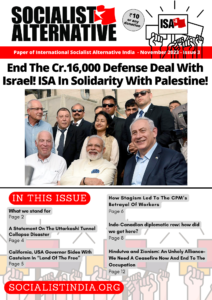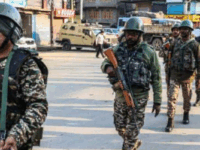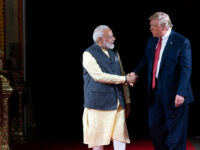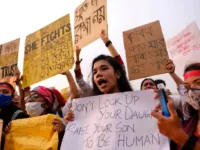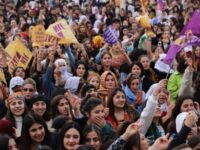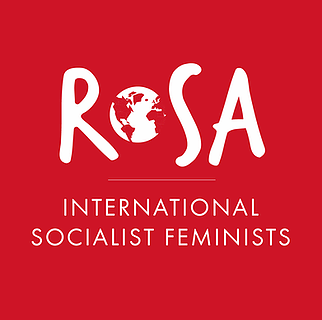Elections in Uttar Pradesh: workers and farmers need political alternative to stop the BJP
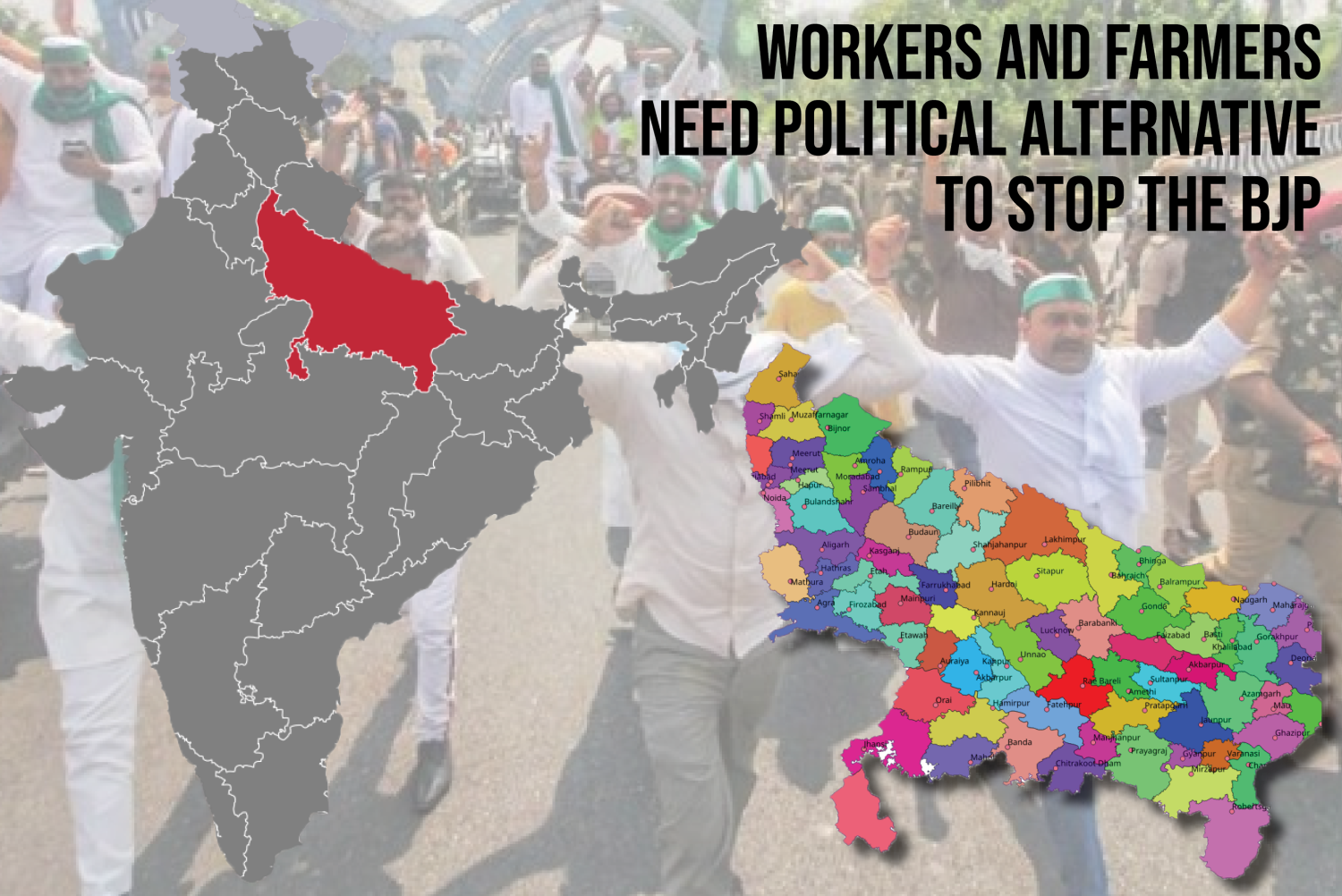
Once again it is election season in India. The biggest and most populated state in India, Uttar Pradesh (UP) is going to the polls in what many commentators are calling one of the most polarised legislative elections in decades. Elections are held on different dates, with the result to be announced on March 10.
UP is a state that has a population of over 300 million people, close to half the population of Europe. Being the most populous state, it also contributes the bulk of MPs to the Indian parliament. So if any party aims to form a government in India, pocketing UP is a must. It is also one of the poorest states of India, with the majority of people being farmers.
The right wing BJP currently holds a super-majority in the state since the 2017 legislative elections, but with the farmers protests of last year galvanizing an intense political atmosphere within the state, will the BJP manage to retain power? If the BJP loses, how great will the loss be? These questions are also causing internal turmoil in the BJP of Uttar Pradesh: a significant number of leaders, including several sitting state ministers and Members of the Legislative Assembly left the party in January. Most of them hail from the OBC or “Other Backward Caste” community, pointing to signs of growing dissent amongst this part of the electorate vis-a-vis the ruling party. If the BJP keeps its majority, even with a diminished vote, it would be mainly as a result of the weakness of the other parties.
Many see this election as a semi-final to the next general election in 2024. With all regional and national political parties undergoing fierce competition, the importance of the class struggle needs to be emphasised and brought to the fore. Political History of Uttar Pradesh
Uttar Pradesh has always been the power centre of every single empire in India that has had pan-India visions. The state lies around the fertile plains of river Ganga and has been the cradle of politics for millennia.
It was also one of the epicenters of India’s freedom struggle, with more than half of India’s Presidents and Prime Ministers being born here. But despite all this, the state remains one of the least literate and has a patriarchal, conservative underbelly.
Ever since the British conquered this region with their divide and rule policy, the region has been the breeding ground of class exploitation via religious segregation. The general public have always aimed to live harmoniously, but almost all political entities have tried to take advantage of religious sensitivity in the state. The lack of an active working class organization to combat this makes the job of the ruling class easier.
Major Political Parties Contesting
There are 5 main political sections across the spectrum contesting this election:
Bharatiya Janata Party (BJP) [or the Indian Peoples Party] is the ruling incumbent party. It sits on the right wing of the spectrum. It borrows its ideology from its parent organization, the RSS, which is far right.
Congress Party [sometimes referred to as the Grand Old Party of India] was the principal organization that led the freedom struggle under Gandhi. UP once used to be a political bastion of Congress Party in the early days of Independent India but today it is non-existent in the state. Ideologically, it is generally “big tent” and sometimes tends towards Social Democracy.
Samajwadi Party [or the Socialist Party] is a party born out of the socialist tendencies in North India in the 70s. Today it remains socialist in name only. Despite being seemingly progressive on economic issues, it is barely connected to any form of class struggle and on several social issues such as LGBTQ+ rights it also tends to be conservative. The leader of the party Akhilesh Yadav was a former chief minister of the state.
Bahujan Samaj Party [or the Backward Peoples Party] is a party that focuses itself on caste issues. Its major support base is the “lower” caste population of the state. It was founded by a dalit activist Kanshi Ram. His disciple and current party supremo Mayawati was also a former Chief Minister of the state. The BSP claims to be inspired by Ambedkar, among others, but in Uttar Pradesh it is primarily an established party that does not hesitate to strike deals with both the BJP and the SP to gain or maintain a position of power.
Others — Uttar Pradesh has several smaller caste based political parties that tend to be the go to alliance partners in any elections. All parties try to carefully align themselves with these smaller parties based on their respective Caste equations. The only faction which speaks of class positions is the Left Front which is basically a coalition of the several communist parties in India which are unfortunately Stalinist.
Major problems Faced by the Masses
The state of Uttar Pradesh was hit particularly hard by Covid-19. The reported figures on the number of infections were probably not believed by anyone. The hospitals were completely overwhelmed. Even without a pandemic, there is a shortage of accessible healthcare. The recently released “Annual Health Index” ranks Uttar Pradesh at the bottom of the list of all Indian states. During the pandemic, seriously ill people were turned away from hospitals. The reaction of the right-wing BJP government in April 2021 was to crack down on anyone who spoke out publicly about the shortages. Despite the pandemic, the government allowed large religious gatherings to take place in the state. The lesser nature of Omicron is a windfall for the government, but the people will not easily forget the disastrous handling of the pandemic.
Another issue that dominated the headlines was the farmers’ protest, which was also strong in parts of Uttar Pradesh. The central government finally had to back down and remove the planned reform in order to stop the protest. Elections against the backdrop of a movement that enjoyed massive popular support would shift attention too much from Hindu chauvinism towards social issues. That would put the BJP in an even more defensive position, especially as government ministers were involved in violent incidents against the farmers’ protest such as in October when 8 farmers were killed during a visit by Deputy Chief Minister Keshav Prasad Maurya to the village of Banbirpur. In the election campaign the local BJP was quick to declare that the farmers movement would have no effect on the elections.
The BJP is doing all it can to focus on and encourage communal divisions, including with increasingly brutal anti-Muslim propaganda. The state has been the breeding ground of communal hate-based politics which plagues the states. There are still memories of horrific riots that have taken place in the recent past, the scars of some which still remain.
Another important concern is women’s safety. Society in this state being highly patriarchal and conservative, the security and equal treatment of women is always in jeopardy. Women are often subjected to severe domestic violence and treated as second class citizens. The number of official complaints is very low, but even these are indicative. Of the 31,000 complaints of violence against women received by the National Commission of Women (NCW) last year — a 30% increase over 2020 — more than half came from Uttar Pradesh. As the Hathras rape case showed, the BJP does not act against this violence but tries to cover it up and stop protests against it.
Another majorly important issue in the state that is often sidelined is the economy. Rampant inflation and rising unemployment has led to increased suffering of the masses. Many industrial centres of Uttar Pradesh that once used to monopolize trade as far as the Mediterranean today lie in tatters. The general neglect of the state by the private sector means quality healthcare and education is denied the majority rural population. Even if it is unclear how much it will impact the elections, discontent is reportedly brewing across the state at these deteriorating living conditions. This is pushing the BJP to double down on its message of communal hatred, while its empty promise of creating 70 lakhs jobs and its “development” narrative have largely been swept under the carpet.
Conclusions
The lack of a stable workers oriented political organization has severely crushed the population of the state, who play into the dirty bigoted politics of capitalist sympathizing parties that work for the ruling class.
The farmers’ movement showed that it is possible to defeat the BJP. This was done through consistent and determined struggle based on mobilisation and solidarity. The workers’ movement has the potential to deal the BJP even harder blows, but to do so, protests against the anti-social policies of organised poverty and privatisations — that further undermine the few services that do exist — need to be seriously taken up. One-off strikes are good in themselves: strikes with an action plan that build towards larger actions are better. Then the actions are not limited to letting off steam, but are aimed at building and accumulating forces for future battles.
Marxists stand for class unity against all forms of oppression, including caste oppression and women’s oppression. Against oppression we stand for solidarity and united struggle for a socialist transformation of society.
